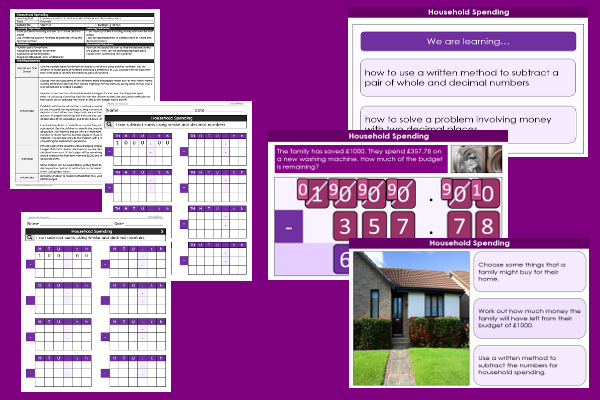Lesson Four – Household Spending

This maths teaching pack for Key Stage Two gets the children to select different items that can be bought for a household and calculate the amount of the remaining budget using subtraction calculations.
The class can practise using a written decomposition method to subtract pairs of whole and decimal numbers to work out the funds available in a household budget.
Download this teaching pack including a lesson plan, classroom activities and an interactive presentation to select different items that can be bought for a household and calculate the amount of the remaining budget using subtraction calculations
Activities in this teaching pack include a differentiated set of templates to identify and record how to subtract pairs of money amounts using a written decomposition method to calculate the remaining budget after items have been bought for a household.
The interactive presentation gets the children to explore how to select items to buy for a household and then calculate the amount of the remaining budget using subtraction calculations.
This lesson is part of a maths scheme of work to get the children to practise using written calculation methods for decomposition to subtract decimal numbers using different real world contexts and abstract number values. There are teaching activities for shared learning, differentiated worksheets to support independent learning and interactive presentations to introduce concepts and key skills.
-

School Grounds
Explain and model how to measure and calculate the perimeters and areas of different shaped locations around the school grounds
-

Rainforest Presentations
Select, manipulate and combine different forms of media to create a multimedia presentation about an aspect of life in a rainforest habitat
-

Flag Printing
Practise and refine different techniques when printing colours, shapes and patterns to design flags to match specific locations
-

Angle Observations
Identify, locate and classify examples of right, acute and obtuse angles that can be observed in a range of different shapes, objects and locations
